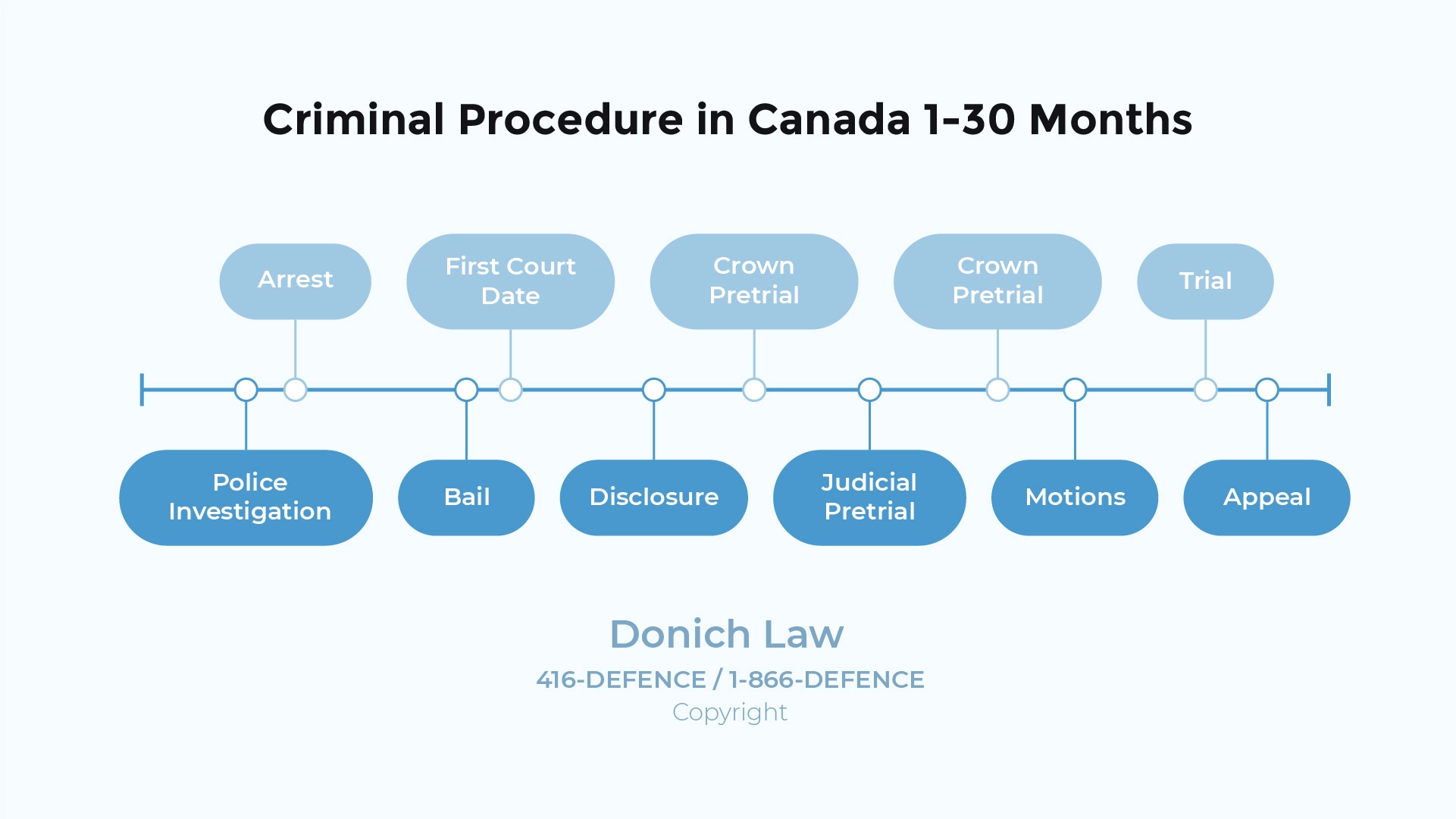
Defend Dangerous Driving Charges
Frequently Asked Questions
Dangerous driving is a criminal offence contained under s. 320.13(1) of the Criminal Code. The provision states, “Everyone commits an offence who operates a conveyance in a manner that, having regard to all of the circumstances, is dangerous to the public.” In plain language, this means that any person who has care or control over a vehicle and is driving it in a way that could be dangerous to other people may be charged with an offence.
Dangerous driving is an example of a hybrid offence. This type of offence allows the Crown to prosecute each case differently depending on its seriousness. More severe examples of dangerous driving are classified as indictable offences that carry a maximum sentence of 10 years imprisonment. Less serious cases will be treated as summary offences, which will result in a maximum of two years less a day imprisonment. An appropriate sentence will depend on the facts of each case, but it is unlikely that an offender will receive the maximum punishment set out in the Code. Instead, an offender will likely face a wide range of sentencing options that may range from imprisonment or conditional sentences to fines, or as little as a conditional or absolute discharge.

- CityNews: How Police will test for Drugged Driving?
- CP24: Civil Sexual Assault Lawsuit at St. Michael’s in Toronto
- CityNews: Jordan Donich comments to CityNews regarding challenges with Sexual Assault Trials in Toronto
- CityNews: Jordan Donich provides expert commentary to CityNews regarding Sexual Assault Prosecution.
- Breakfast Television: Role of Mental Health in Court Proceedings.
- Global News National: Bruce McArthur will not serve consecutive sentences.
- CTV News National: Handgun ban supported by majority of Canadians: Nanos survey.
- CP24: Sentencing Hearing for Chair Girl.


How Does a Court Determine What Dangerous Driving is in Each Case?
According to the Code, dangerous driving requires a person’s driving to pose a threat to the public. The exact standard for what is considered dangerous driving is referred to in case law as a marked departure. Essentially, this means that if the Crown can prove that an accused person’s driving was significantly different than other, reasonable drivers, they may be convicted of the dangerous driving offence. Basic examples of a marked departure may include driving at an excessively high speed, swerving or failing to stay in the appropriate lane, or deliberately causing an accident.
The Ontario Court of Justice case of R. v. Aldrich, 2023 ONCJ 536 (CanLII) discusses the concept of a marked departure in the context of dangerous driving. In the case, the incident leading to the charge involved the accused driving through pylons the police had set up and onto a curb while the police had pulled over a different vehicle. The accused managed to avoid a collision by driving up on the sidewalk and continued on. As the court considered whether this behaviour represented a marked departure from normal driving, it was noted that the finding must be made in consideration of all the facts of a case, and that a marked departure requires an accused’s actions to be more serious than mere carelessness because of the serious consequences of finding fault for this criminal offence. In this case, because the accused had driven onto a sidewalk and tried to pass a stopped police car in a clearly unsafe manner, it could be concluded that the accused’s behaviour represented a marked departure from that of a normal, reasonable driver.
Stages of the Criminal Justice System

Will a Dangerous Driving Conviction Impact my Insurance?
A dangerous driving conviction will almost always impact an offender’s coverage. The conviction could make it more difficult for an offender to purchase a new insurance policy. For an individual who is already insured, it is likely that their insurance will increase, in many cases significantly.
In general, an offender should be aware that their insurance company has access to their driving record, which will disclose any driving violations a person has committed under the Code or the Highway Traffic Act. It is important to note that a driver convicted under the Code for dangerous driving may also be subject to penalties under the HTA for the same incident. These consequences might be accompanied by a driving prohibition, which is an order made in addition to a main sentence that will prevent an offender from driving for a specified amount of time.
What are Some Possible Defences to Dangerous Driving?
There are several possible defences to a dangerous driving charge. The most common would be a finding that the accused driver did not operate their vehicle in a way that was dangerous to the public. This type of defence may be used where a driver can prove through dashcam footage or other means, that they either obeyed the rules of the road, or acted reasonably given the circumstances at the time. Similarly to how the dangerous driving offences requires dangerous driving, the offence also requires the accused person to be operating a vehicle that is mentioned under the definition of conveyance within the Code. A conveyance includes motor vehicles, boats and other vessels, aircraft, or railway equipment. So, if an accused person is not operating one of those categories of vehicle, they have not committed the offence.
A final defence revolves around the concept of a lawful excuse. This means that an accused can drive a vehicle in a manner that would otherwise be considered dangerous if they have a legitimate reason to do so. Examples of a lawful excuse have been known to include responding to a medical emergency or a threat to life. This means that if a person is driving and their passenger experiences a health emergency like a heart attack that requires immediate medical attention, they may not be convicted for any dangerous driving that occurs on route to the hospital.
What’s a Crime in Canada?
Can a Dangerous Driving Conviction Impact Someone’s Immigration Status?
Aside from the criminal consequences, a dangerous driving conviction could impact a person’s status if they have immigrated to Canada. The 10-year maximum penalty for indictable offence dangerous driving qualifies as an example of serious criminality under s. 36(1) of the Immigration and Refugee Protection Act. Under this provision, any permanent resident convicted of indictable offence dangerous driving will be deemed inadmissible to Canada. The same rule is applied to any foreign national within Canada under s. 36(2). Therefore, because of this type of offence, a permanent resident could be deported if they are convicted and receive a sentence of six months or more. If a person has entered Canada under a student visa or work permit, that permit will not be renewed, and the person will be deported. Finally, a refugee claimant who commits such an offence will have their claim suspended and they will then be deported.
Law Newbie is a free AI research assistant that can help you safely answer questions about criminal law.




Recent Cases
R. v. Jeffery, 2022 ONSC 3828
This Ontario Superior Court of Justice case dealt in part with a dangerous driving offence. In addition to pleading guilty to dangerous driving, the offender was also convicted of several offences relating to the possession of a firearm. The dangerous driving involved the offender fleeing from the police at a high rate of speeding, running a stop sign, entering an oncoming traffic lane, and then finally stopping after crashing into two trees. The driving was motivated by the fact that an unlicensed gun was in the vehicle when the police attempted to stop the car.
The offender was issued a six-month conditional sentence for the dangerous driving charge alongside an 18-month driving prohibition. This sentence was part of a total two year less a day sentence. Typically, a guilty plea is a mitigating factor that can reduce the sentence an offender receives because it avoids the need for a trial and demonstrates that the offender accepts responsibility for their actions. However, given the seriousness of the other offences at play in this case, the offender was liable for a stricter sentence.
R. v. Hadi, 2022 ONSC 2903
This Ontario Superior Court of Justice case also dealt with multiple offenders, one of whom committed a dangerous driving offence in connection with other criminal behaviour. The main issue of the case concerned a robbery committed by the offenders. The offender charged with dangerous driving was with the others to dispose of evidence when the police arrived to arrest them. The dangerous driving occurred when that offender attempted to flee from the police at a high speed.
When the court dealt with the dangerous driving offence, it focused on a marked departure in the circumstances. Given that the dangerous driving occurred in connection with other serious crimes, that fact could be considered for its impact on the actions of a reasonable driver in those same circumstances. It was found that the driver drove at high speeds in the wrong lane, collided with a police vehicle and a barricade before going airborne and landing while colliding with another vehicle. Criminal fault should obviously be attached to this type of driving. “There can be no doubt that Mr. Mohamed’s driving was dangerous to the public in the circumstances and constituted a marked departure from the standard of care of a reasonably prudent driver, if not a drastic one.” [at para 121]











